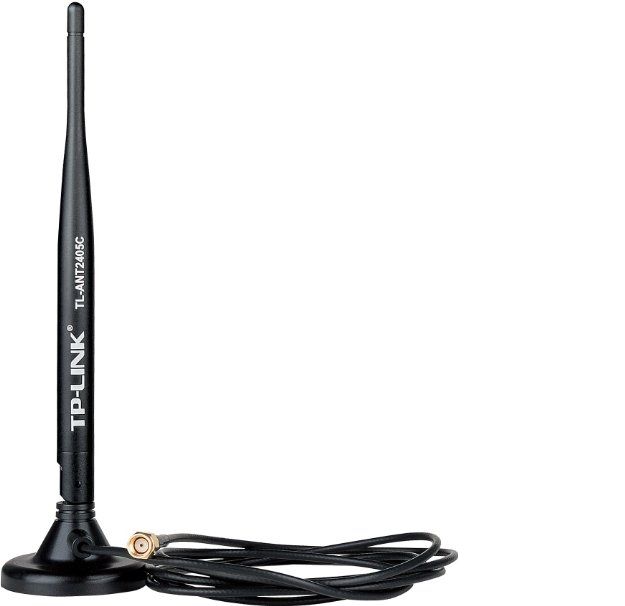If you are getting ready to add an antenna to your router in order to extend the Wi-Fi range in your home, just how long of a cable can you use? Does the cable's length even matter? Today's SuperUser Q&A post has the answer to a curious reader's question.
Today’s Question & Answer session comes to us courtesy of SuperUser—a subdivision of Stack Exchange, a community-driven grouping of Q&A web sites.
Photo courtesy of Tyler Nienhouse (Flickr).
The Question
SuperUser reader Searock wants to know how much Wi-Fi signal strength is lost per foot of antenna cable length:
I am thinking about buying an antenna for my router so that I can extend the Wi-Fi range in my home. I have been looking at some products like this one, for example: TP-Link TL-ANT2405C Indoor Desktop Omni-directional Antenna
The length of the cable is 130 centimeters (~51 inches). Is it OK if I increase the length of the cable or will it affect the potential range? What is the maximum length of cable that I can use?
How much Wi-Fi signal strength is actually lost per foot of antenna cable length?
The Answer
SuperUser contributor Jamie Hanrahan has the answer for us:
There is no arbitrary limit, but any increase in cable length will reduce signal strength. The connectors required to add another section of cable to the one shown will also have the same effect. As other commenters have noted, how much the signal strength is reduced for a given length depends on the cable and the frequency.
A common, relatively inexpensive cable for short runs to a Wi-Fi antenna is LMR100. At 2.4 GHz (the common Wi-Fi band), 15 feet of LMR100 will result in a signal loss of about 6 dB. That is equivalent to dropping power down to just about 25 percent of what it was (each 3 dB equals a 50 percent gain or loss in power). With LMR400 cable, your loss would only be about 1 dB, but it is more expensive and also a lot less flexible (more difficult to install).
The loss in dB is linear with a cable's length. If you use 30 feet of LMR100 cable, the loss will be 12 dB (the signal will be about 1/16 of what it was). With 7.5 feet of LMR100 cable, the loss will only be 3 dB (about half of the signal's strength). All of these numbers are for the 2.4 GHz Wi-Fi band. For the 5 GHz Wi-Fi band, it will be much worse.
Do not even think about using RG59 (the older, thinner coax cable that was used for TV cable/antennas and is commonly seen with "F" or "BNC" connectors attached; it is not even the right impedance) or RG58 (which has the right impedance, but is still very "lossy" at these frequencies). These cable types are not rated at all for use above 1 GHz.
You can find data sheets with signal loss graphs and calculators for various types of microwave coax cable all over the Internet. Here is a calculator (found at a cable dealer's website) that covers a wide variety of cable types. And to convert dB to power ratios (or back), try this decibel calculator. Keep in mind that since this is signal loss we are talking about, make sure to enter the dB as a negative number before pressing the calculate button. Also note that you want the power ratio, not the voltage.
One last tip. Do not try to assemble cables yourself. Buy cables with the right connectors already attached. What may seem like very minor mistakes with connector assembly can cause huge losses at these frequencies. And absolutely do not cut the connectors off and try to splice the coax. You might as well throw the antenna away at that point.
Have something to add to the explanation? Sound off in the comments. Want to read more answers from other tech-savvy Stack Exchange users? Check out the full discussion thread here.


